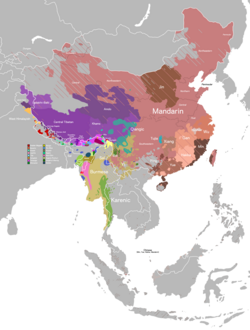History
Although numerous Romanized materials labeled as "Swatow dialect" were produced from the nineteenth to the early twentieth century, their phonological systems actually reflected the dialect of the prefectural city of Chaochowfoo. [5] The modern Swatow dialect did not take shape until the 1940s. As a modern emerging city, Swatow's residents were mainly immigrants from various parts of the Chaoshan region and their descendants. Between the establishment of Swatow as a city in 1921 and 1934, a large influx of immigrants increased the population from 60,000 to 193,000, with an average annual growth of 10,000. Thereafter, population growth slowed, and the various dialects began to merge, gradually developing into a stable phonological system. By around 1946, the present-day phonological system of the Swatow dialect had already taken shape and come to be regarded as the norm. [6]
This page is based on this
Wikipedia article Text is available under the
CC BY-SA 4.0 license; additional terms may apply.
Images, videos and audio are available under their respective licenses.


